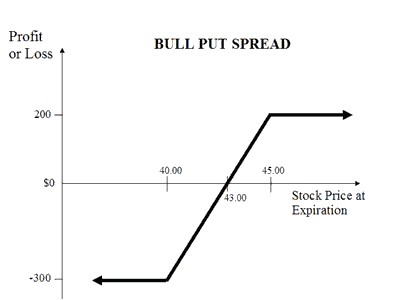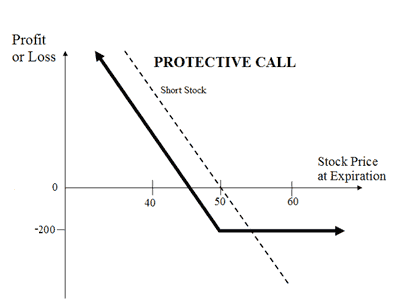 Zerodha (Trading Account)
Zerodha (Trading Account)
FREE Equity Delivery and MF
Flat ₹20/trade Intra-day/F&O
 Zerodha (Trading Account)
Zerodha (Trading Account)
FREE Equity Delivery and MF
Flat ₹20/trade Intra-day/F&O

|
|
Compare Bull Put Spread and Protective Call (Synthetic Long Put) options trading strategies. Find similarities and differences between Bull Put Spread and Protective Call (Synthetic Long Put) strategies. Find the best options trading strategy for your trading needs.
| Bull Put Spread | Protective Call (Synthetic Long Put) | |
|---|---|---|
 |
 |
|
| About Strategy | A Bull Put Spread (or Bull Put Credit Spread) strategy is a Bullish strategy to be used when you're expecting the price of the underlying instrument to mildly rise or be less volatile. The strategy involves buying a Put Option and selling a Put Option at different strike prices. The risk and reward for this strategy is limited. A Bull Put Strategy involves Buy OTM Put Option and Sell ITM Put Option. For example, If you are of the view that the price of Reliance Shares will moderately gain or drop its volatility in near future. If Reliance is currently trading at Rs 600 then you will buy an OTM Put Option at Rs 700 and a sell an ITM Put Option at Rs 550. You will make a profit when, at expiry, Reliance closes at Rs 700 level and incur losse... Read More | The Protective Call strategy is a hedging strategy. In this strategy, a trader shorts position in the underlying asset (sell shares or sell futures) and buys an ATM Call Option to cover against the rise in the price of the underlying. This strategy is opposite of the Synthetic Call strategy. It is used when the trader is bearish on the underlying asset and would like to protect 'rise in the price' of the underlying asset. The risk is limited in the strategy while the rewards are unlimited. How to use a Protective Call trading strategy? The usual Protective Call Strategy looks like as below for State Bank of India (SBI) Shares which are currently traded at Rs 275 (SBI Spot Price): Protective Call Orders - SBI Stock Orde... Read More |
| Market View | Bullish | Bearish |
| Strategy Level | Advance | Beginners |
| Options Type | Put | Call + Underlying |
| Number of Positions | 2 | 2 |
| Risk Profile | Limited | Limited |
| Reward Profile | Limited | Unlimited |
| Breakeven Point | Strike price of short put - net premium paid | Underlying Price - Call Premium |
| Bull Put Spread | Protective Call (Synthetic Long Put) | |
|---|---|---|
| When to use? | This strategy works well when you're of the view that the price of a particular underlying will rise, move sideways, or marginally fall. |
The Protective Call option strategy is used when you are bearish in market view and want to short shares to benefit from it. The strategy minimizes your risk in the event of prime movements going against your expectations. |
| Market View | Bullish When you are expecting a moderate rise in the price of the underlying or less volatility. |
Bearish When you are bearish on the underlying but want to protect the upside. |
| Action |
A Bull Put Strategy involves Buy OTM Put Option + Sell ITM Put Option. For example, If you are of the view that the price of Reliance Shares will moderately gain or drop its volatility in near future. If Reliance is currently trading at 600 then you will buy a OTM PUT OPTION at 700 and a sell a ITM PUT OPTION at 550. You will make a profit when at expiry Reliance closes at 700 level and incur losses if the prices fall down below the current price. |
|
| Breakeven Point | Strike price of short put - net premium paid |
Underlying Price - Call Premium When the price of the underlying is equal to the total of the sale price of the underlying and premium paid. |
| Bull Put Spread | Protective Call (Synthetic Long Put) | |
|---|---|---|
| Risks | Limited Maximum loss occurs when the stock price moves below the lower strike price on expiration date. Max Loss = (Strike Price Put 1 - Strike Price of Put 2) - Net Premium Received Max Loss Occurs When Price of Underlying <= Strike Price of Long Put |
Limited The maximum loss is limited to the premium paid for buying the Call option. It occurs when the price of the underlying is less than the strike price of Call Option. Maximum Loss = Call Strike Price - Sale Price of Underlying + Premium Paid |
| Rewards | Limited Maximum profit happens when the price of the underlying moves above the strike price of Short Put on expiration date. Max Profit = Net Premium Received |
Unlimited The maximum profit is unlimited in this strategy. The profit is dependent on the sale price of the underlying. Profit = Sale Price of Underlying - Price of Underlying - Premium Paid |
| Maximum Profit Scenario | Both options unexercised |
Underlying goes down and Option not exercised |
| Maximum Loss Scenario | Both options exercised |
Underlying goes down and Option exercised |
| Bull Put Spread | Protective Call (Synthetic Long Put) | |
|---|---|---|
| Advantages | Allows you to benefit from time decay in profit situations. Helps you profit from 3 scenarios: rise, sideway movements and marginal fall of the underlying. |
Minimizes the risk when entering into a short position while keeping the profit potential limited. |
| Disadvantage | Limited profit. Time decay may go against you in loss situations. |
Premium paid for Call Option may eat into your profits. |
| Simillar Strategies | Bull Call Spread, Bear Put Spread, Collar | Long Put |

Add a public comment...

FREE Intraday Trading (Eq, F&O)
Flat ₹20 Per Trade in F&O
|
|